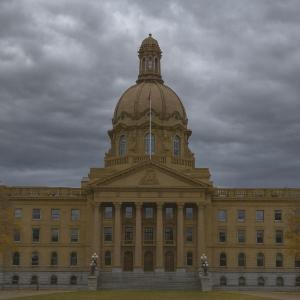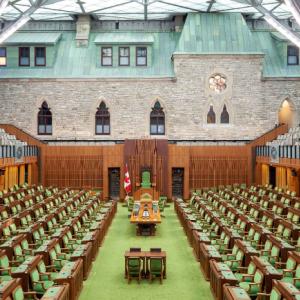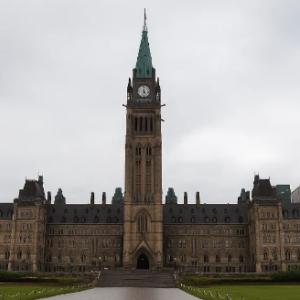Canada’s doctor shortage is no accident
It was policy.
Editor’s Note: Code Black is a practicing emergency physician in B.C. who writes under a pseudonym out of fear of professional retaliation. His identity and credentials have been verified by Canada Healthwatch.
Both in Canada and the U.S., governments explicitly chose to train fewer doctors. We’re still dealing with the fallout.
In the U.S., a 1980 government report forecast a “physician surplus” by the year 2000. It was wrong, and it justified the staffing bottlenecks that define today's familiar state of healthcare crisis, both in the profit-centric U.S., and in Canada’s relatively egalitarian system.
The analysis underweighted population growth and the rise of longer lifespans and chronic illness, but its conclusions froze the expansion of medical training for a generation.
When the U.S. froze funding for residency spots in 1997, it hard-coded this flawed logic. Logic Canada would import.
In 1991, the Barer–Stoddart Report served as Canada’s copycat policy playbook. Commissioned by the country’s health ministers, it warned of a physician surplus and recommended provincial cuts to training.
This would not be the last time we fell victim to policy contagion from the South.
Provinces cut enrolment, capped residencies, and stalled funding for decades. It was austerity dressed up as population planning, and it produced a lost generation of Canadian physicians (and an even more lost generation of patients) just as demand for doctors began to skyrocket.
U.S. officials have since acknowledged that this was a historic miscalculation, but governments continued to throttle the pipeline of new doctors, even as we marched closer to today’s demographic cliff.
The physician workforce itself is now rapidly aging out. “There simply has been no plan for the demographic shift of the health care workforce,” wrote former Ontario Minister of Long-Term Care, Dr. Merrilee Fullerton, in an op-ed last year.
Nearly one in five Canadian physicians is now over 60, and the rate of retirement is accelerating — particularly in family medicine and rural practice.
At the same time, our patients are aging even faster and harder than us. The number of Canadians aged 65 and older has grown from about 4.9 million in 2011 to more than 8 million today. It is projected to exceed 10 million by 2035.
Just as the demand curve steepens, the workforce curve flattens.
This lands us in a situation where millions already lack a family doctor, and where ERs are forced to absorb everything from basic primary care to late-stage societal crises.
The specialist economy
The past three decades have been defined by exponential growth in medical complexity. Genomics, precision oncology, robotic surgery, biologics.
But the workforce that performs and interprets these interventions didn’t scale with the pace of scientific advancement. Instead, it stratified. Subspecialists narrowed lanes, concentrated their pay and prestige, and monopolized access to the most lucrative procedures.
Here’s what this looks like from the inside. On shift a man walked into my department with scrotal cellulitis and a perineal abscess. He was septic. He needed urology.
I called, of course, but the urologist refused to come.
When I pressed, he asked my name, then called me an asshole.
The next day he operated. His own notes documented nearly half a litre of pus with necrotic tissue in the perineum and scrotum. A limb-threatening, life-threatening infection.
These instances of professional hostility and life-altering delay are not rare. This is emergency medicine's wallpaper. It has been my whole career.
We advocate, we push, we get insulted for it. Patients pay the price: in pain, delay, and sometimes death.
Patients assume, wrongly, that if they come to the ER, the specialist will appear. But unless you’re coding in front of them (and sometimes not even then) the specialist might decide you “don’t belong” on their service.
In other words: you’re someone else’s problem.
Medicine’s problem with “refusal-culture”
Sociologists have a term for this. Jurisdictional boundary work: the endless reverse-turf war over who “owns” a patient. It makes me feel less like a doctor and more like a hostage negotiator. Things didn’t get this bad by accident.
Follow the money. Subspecialists sit atop the income hierarchy in medicine, and their political donations reflect this.
In the 2020 U.S. election cycle, 60 per cent of surgeons’ donations went to Republicans, about 31 per cent to Democrats, and the rest to “nonpartisan groups.”
There’s no clearer sign than this of the diverging class-alignments within medicine. The physicians most insulated from system failure often finance the politicians who accelerate it, while those left to absorb the consequences put their money and energy into keeping care accessible.
The warning
Meanwhile, emergency physicians absorb what no one else will. We don’t get to say no.
We see the aged with multiple comorbidities, the working poor with no family doctor, the psychiatric crises at two in the morning, and the patients who fell through the cracks.
We get punished for insisting on safe, in-scope care. That is not burnout per se. But it is moral injury — a betrayal by the very institutions we uphold.
If you arrive at the ER with a complex problem that isn’t instantly fatal, the specialist may not come. They might claim you “don’t belong” in their lane. They can let you wait until your condition deteriorates enough to be undeniable.
This is the end-result of a system that deliberately underbuilt its workforce, rewarded subspecialization, and normalized refusal. Canada’s system is not merely strained, it is breaking. One notable symptom is the creeping demand for private care.
Canadians deserve a transparent accounting of why so many lack a general practitioner; why ERs are collapsing under the weight of preventable conditions; why provinces failed to expand system capacity to match long-forecasted demographics, and most importantly, who is driving the collapse.
And let us be honest about what happens to those who try to raise the alarm from the inside.
In B.C., an ER physician alleged that Fraser Health retaliated after she raised safety concerns. Healthcare workers elsewhere describe toxic management cultures of retaliation and coerced resignation.
Physicians are surveyed annually; our warnings accumulate in binders on the dusty shelves of leadership. There is no sustained, on-the-ground engagement with those delivering care.
The doctors who do advocate can't break the cycle from within. People must demand it.
When leaders say change is “impossible,” Canadians must demand to know why, and then insist on a better answer. People are literally dying. It could be your parent, your child, or you on that gurney. Do not assume the system will save you.
Code Black is a physician and health policy expert who practices in B.C. since immigrating from the U.S. last year. Their previous Canada Healthwatch articles include I traded my U.S. medical career for life in Canada, and Notes from the ER in an Anti-Science Age.









